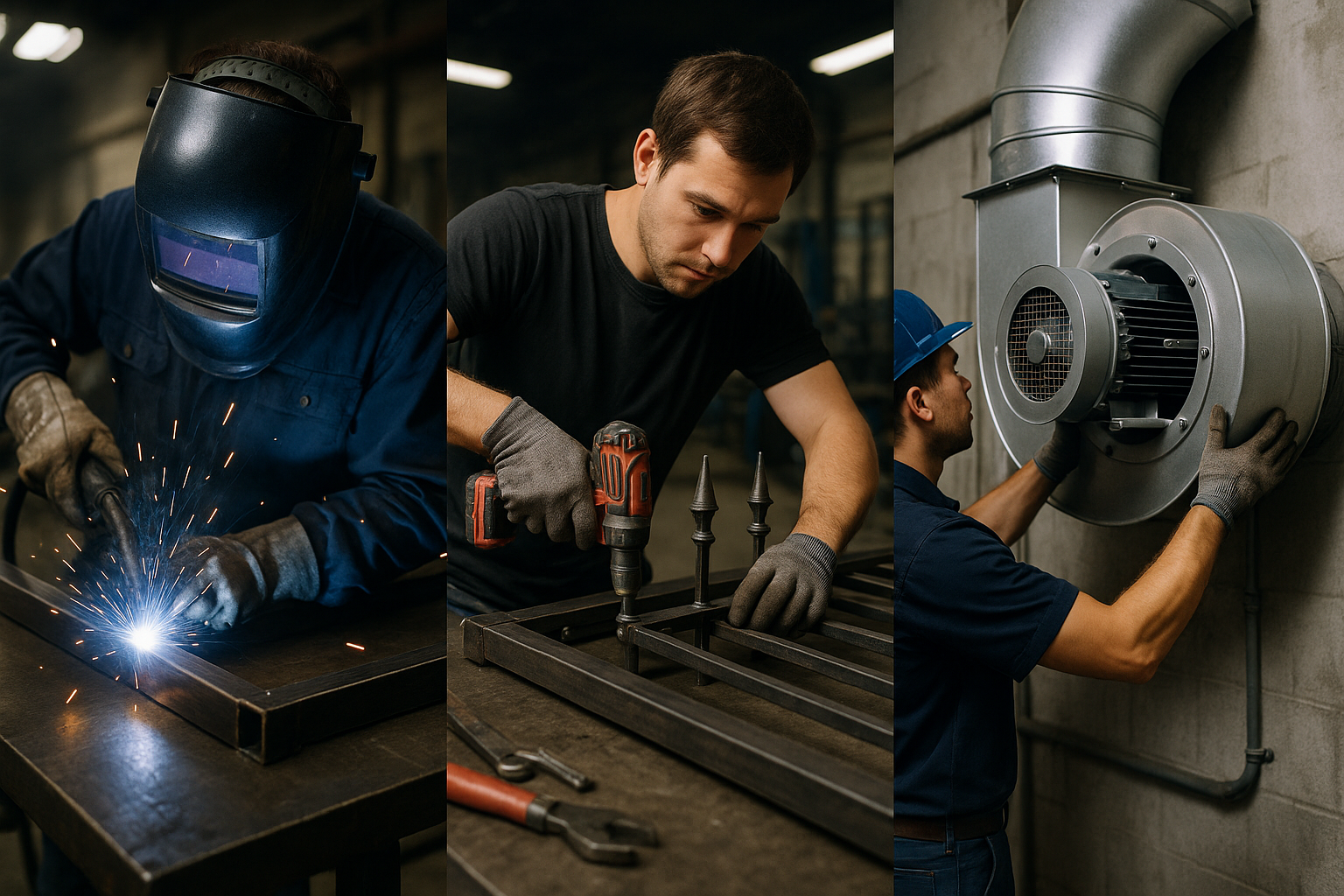
At Has Metal Works, we’ve seen firsthand how proper material selection can make or break a ventilation system. In this article, we’ll explore why choosing the right materials matters, what your options are, and how we ensure that every ventilation system we fabricate is built to last.

Understanding the Function of Industrial Ventilation Systems
Before diving into materials, it’s important to understand the role of ventilation in industrial settings.
An industrial ventilation system:
- Maintains air quality by removing dust, fumes, smoke, and chemicals
- Controls temperature and humidity for safe working conditions
- Supports machine performance by regulating ambient environment
- Protects workers from respiratory hazards
- Ensures compliance with local and international safety standards
Each of these functions depends heavily on the materials used to build the system’s ducts, housings, filters, and connectors.
The Risks of Using the Wrong Material
Using unsuitable or low-quality materials in a ventilation system can lead to serious consequences, such as:
- Corrosion and rust that contaminate airflow and compromise structural integrity
- Air leaks due to warping or deformation under heat
- Mold and bacterial growth inside ducts made from porous or coated surfaces
- Excessive maintenance costs from frequent repairs or early replacements
- Regulatory violations and potential fines in hygiene-sensitive industries
In short, material selection is not just a technical detail—it’s a strategic decision that affects safety, efficiency, and long-term ROI.
Commonly Used Materials in Ventilation Fabrication
1. Galvanized Steel
Galvanized sheet metal is one of the most widely used materials for industrial ductwork. Its zinc coating provides protection against corrosion, making it ideal for general-purpose environments like warehouses or factories.
Pros:
- Affordable
- Easy to fabricate and install
- Corrosion-resistant in dry or mildly humid conditions
Cons:
- Not suitable for highly acidic or alkaline environments
- May degrade in high-moisture applications over time
2. Stainless Steel (304 / 316 Grades)
Stainless steel is the go-to choice for environments that require strict hygiene and resistance to aggressive chemicals, such as food processing plants or laboratories.
Pros:
- Extremely durable and corrosion-resistant
- Suitable for high-temperature and high-humidity conditions
- Meets sanitary standards (FDA, HACCP, etc.)
Cons:
- More expensive than galvanized steel
- Requires specialized fabrication tools
3. Aluminum
Used less frequently in industrial systems but preferred where weight reduction is a priority, such as mobile installations or temporary structures.
Pros:
- Lightweight and rust-proof
- Easy to handle and transport
Cons:
- Lower strength compared to steel
- Can be prone to denting or damage in rugged environments
How We Select the Right Material at Has Metal Works
At Has Metal Works, every ventilation project begins with a detailed environmental assessment. We consider factors such as:
- Air temperature and humidity levels
- Chemical exposure in the operating environment
- Required cleanliness standards (e.g., food-grade or medical)
- Pressure and velocity requirements
- Client budget and lifecycle expectations
Based on this information, we recommend the most appropriate material—balancing performance, durability, cost, and compliance.

Real-World Example: Stainless Steel Ducting for a Dairy Facility
In a recent project, we designed and fabricated a stainless steel ventilation system for a dairy production facility. The environment involved constant moisture, temperature fluctuations, and sanitation chemicals.
Using 316-grade stainless steel, we delivered a system that was fully sealed, easy to clean, and resistant to corrosion even after years of use. The result? Reduced maintenance downtime and perfect compliance with food safety standards.
The Has Metal Works Advantage
Our strength lies not just in fabrication, but in consultation. We combine engineering insight with practical field experience to deliver ventilation systems that work flawlessly from day one.
- Custom-fabricated to exact specifications
- Material sourcing from certified suppliers
- Precision welding and leak-proof sealing
- Optional CAD modeling and airflow simulation
Every duct, joint, and bracket we produce is designed to last in the real world—not just on paper.
A high-performing industrial ventilation system starts with the right materials. From steel to stainless, galvanized to custom coatings, every choice you make has a long-term impact on performance, safety, and operational cost.
At Has Metal Works, we help you make those choices wisely—with data, experience, and craftsmanship behind every recommendation.


You must be logged in to post a comment.